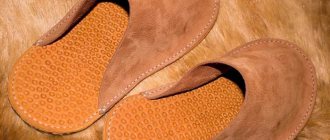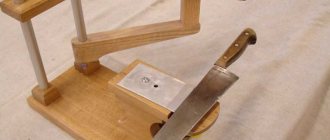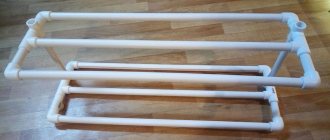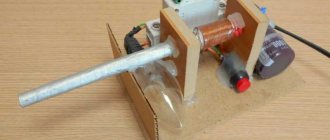When do you need a homemade incubator?
A DIY incubator will be an excellent solution if:
You need much more chickens or other poultry than are naturally produced. It’s really not worth waiting for a sufficient number of chicks to hatch. It is very unstable, and there is almost never a large brood. A do-it-yourself incubator is an opportunity to increase it to the required number.
I plan to have poultry, but I don’t want to buy chicks. This is also a common reason for thinking about creating a homemade incubator. It can be cheaper than buying chicks, especially if used annually.
There is an intention to breed chicks or ducklings for sale. From this you can make either a small part-time job or a profitable seasonal business. And it doesn’t matter at all whether for this purpose the incubator was made with your own hands at home or purchased in a store. The main thing is that it works properly.
Thermostat
If the temperature rises when using lamps, then a rheostat must be built into the electrical network. This is a special device, its task is to increase the current resistance, then the voltage across the lamp will drop, and as a result the temperature will decrease.
If you have broken devices such as a drill, screwdriver, or grinder, then you can get the rheostat from there.
Otherwise, you will have to go to the store; such a device costs 100-200 rubles and is sold in hardware stores.
Types of incubators
Incubators are divided into the following types:
- Industrial. Designed for thousands of eggs, sometimes hundreds of thousands.
- Farmer's. From 100 to 1000 eggs.
- Household. Quite simple models that almost anyone can handle. You just need to understand the instructions, remember to monitor the temperature and turn the eggs according to the schedule. Usually designed to hatch up to hundreds of chicks.
Turning eggs in the incubator
To ensure that the embryos develop and warm up evenly, the eggs must be turned every 2-4 hours. In small incubators, the manual turning method is often used, and in machines designed for 50 or more eggs, it is optimal to use an automatic turning system. It is divided into two types: frame and inclined.
Each type of tray has its own pros and cons. Frame rotation consumes less energy, and the rotation mechanism is very easy to operate. Another advantage: can be used in small incubators. Disadvantages include the influence of the shift step on the radius of rotation of the egg. If the frame is low, the eggs may hit each other. Eggs can also be damaged by sudden movements of the frames.
The inclined tray ensures guaranteed rotation at a given angle, regardless of the size of the eggs.
The horizontal movement of the trays along the guides reduces the level of egg damage by 75-85%. The disadvantages include more complex maintenance and high energy consumption. The design is heavier, which is not always convenient for use in small incubation machines.
Features of types of incubators
In addition to the number of eggs, different types of incubators also differ in design, size and degree of automation.
Industrial ones would be extremely difficult to maintain if only manual labor had to be used. Household ones, on the contrary, are becoming more expensive due to automation, which is inconvenient for buyers.
If you plan to breed chickens for sale, a farm model within a house or apartment is sufficient. But even a household one will do: many people use several incubators at once, which allows them to receive a hatch every few days, on schedule.
Automated models of modern incubators
Manufacturing companies use modern technologies that automate part of the work, take the necessary measurements and make adjustments. Using such systems you can regulate:
- humidity;
- degree of ventilation;
- turns.
Gas analyzers and sensors on eggs are also used. All this allows you to work automatically, setting up the device once and checking it periodically.
You can make a home incubator for eggs with your own hands, but it will be difficult to implement an automatic system. However, most people can create a regular household model.
Egg culling
For a high hatchability rate, preliminary collection and correct egg storage conditions are of great importance.
Store eggs for brood in a horizontal position, turning them over periodically, at a temperature not exceeding 12 degrees and humidity not exceeding 80%.
Eggs with a damaged, thin or rough surface or irregular shape are rejected. Using an ovoscope device, eggs with two yolks, with a large chamber made of air, are set.
should never be washed before being placed in an incubator , because this damages the film over the shell, which has certain properties. Eggs that are too large are also not suitable for incubation.
Home incubator: the main thing
The first step is to determine the dimensions of the future structure. To do this, a decision is initially made on where it will be convenient to place it. This step is especially important when you plan to keep the incubator just in the apartment.
The basic structure of the device is as follows:
- A specially designed box, designed in size for the required number of eggs.
- Dishes for water at the bottom. This is necessary in order to regulate the air humidity in the device.
- Tray with eggs. Must be secured so that they are at a height of about 15 cm from the bottom. In store-bought household incubators, the height of the eggs is lower, but for homemade ones it is better to provide for a more significant rise.
- Sensors in the center. Necessary for temperature control, you can also install other, additional ones. It's good if there are humidity sensors.
- Heat source. You need something that will heat fairly evenly. For incubators, a heating circuit is often used; you can also use an incandescent lamp. It is fixed on the lid from the inside, at a height of about 20-25 cm from the eggs.
- Holes. They should be on the bottom and on the lid. This is done to ensure good ventilation of the incubator. The holes should not be large. About 1-2 cm in diameter will be enough.
This is just a basic, basic diagram that superficially shows how everything should be arranged. As you can see, the system is quite simple, but it needs to be done as correctly as possible.
Note!
- Do-it-yourself charger for a car battery: a step-by-step guide for making the device at home, selecting materials for assembling the structure
DIY laboratory power supply | Step-by-step instructions on how and from what elements to build a power supply
- DIY antenna for digital TV - photo instructions on how to make simple antennas for digital TV
Homemade models can also be different: for example, with a heat source placed in a separate chamber. You can even build an incubator with your own hands with automatic turning: it all depends on how much time and effort you don’t mind spending on creating this system. The following describes the options for creating the device.
Automatic heating system
It is extremely important to position the heating elements correctly in a fanless incubator. In different homemade incubators they are placed in different ways: under the eggs, above the eggs, on top, on the side or even around the perimeter.
The distance from the eggs to the heating element directly depends on the type of heater. For example, if light bulbs are used, then the distance should be at least 25 cm, and if you choose nichrome wire as a heating element, then 10 cm is enough. Drafts should not be allowed, otherwise the entire brood will die.
Thermostat and electrical circuit of the device
For the development of the embryo inside the egg, it is necessary to observe a certain required temperature regime, which must be maintained with an absolute error of half a degree.
This error consists of the temperature difference across the surface of the tray with hatching eggs and the error in maintaining the temperature of the device by the thermostat.
You can use bimetallic plates, electric contactors, and barometric sensors as a heat regulator.
Comparative description of homemade thermostats
- Electric contactor . This is a mercury thermometer with an electrode soldered into the tube. The second electrode is a column of mercury. During heating, mercury moves through a glass tube and, reaching the electrode, closes the electrical circuit. This is a signal to turn off the incubator heating.
- Bimetallic plate . The cheapest, but also the most unreliable means of heating an incubator. The principle action is that when the plate is heated with different temperature expansion, it bends and, touching the second electrode, closes the circuit.
- Barometric sensor . This is a hermetically sealed cylinder made of elastic metal, with a height less than the diameter, filled with ether. One of the electrodes is the cylinder itself, the other is a screw fixed a millimeter from the bottom. When heated, ether vapor increases pressure and the bottom bends, thus closing the circuit, which is a signal to turn off the heating elements.
Each Samodelkin has a choice - which thermostat to adapt to his incubator. But it must be remembered that all these devices are quite fire hazardous. By the way, you can purchase a ready-made thermostat.
Humidity control
The humidity in the incubator is controlled using a psychrometer , which can be purchased without difficulty and at special material costs at veterinary pharmacies or hardware stores.
Or, as an alternative, make your own from two thermometers, which are fixed on one board. The nose part of one thermometer should be wrapped with 3-4 layers of sterile medical bandage, the other end should be lowered into a container with distilled water. The second thermometer remains dry. The difference in thermometer readings determines the humidity in the incubator.
Modes
Immediately before starting incubation, you need to check the reliability of the incubator system for 3 days and try to set the temperature required for the process.
It is especially important that there is no overheating: if the embryo is at a temperature of 41 degrees for 10 minutes, it will die.
In industrially manufactured incubators, eggs are turned every 2 hours, but 3 turns per day are sufficient. It is necessary to turn the eggs, since there is a difference in egg temperature of about 2 degrees on different sides.
Nuances, pros and cons of homemade incubators
Before you start creating an incubator with your own hands, you need to evaluate your strengths and weigh the pros and cons. It is important to understand that all rules are critical. Even a deviation of 1-2 degrees for a short time will kill the embryos.
Also, each bird has its own conditions for incubating eggs. It is necessary to immerse yourself in the topic, study, apply, and avoid mistakes.
Advantages of a DIY incubator:
- Cheap if most of the materials are already in stock. For example, many people have them somewhere in the garage, others may take them from work.
- You can independently plan the size, capacity, shape.
- Universal, suitable for eggs of any poultry.
- If the result is successful, they work stably and for a long time, and the owner will understand his device, and if it breaks down, he can easily fix it.
Flaws:
- Can get expensive if you buy all the parts. Much depends on the prices of the chosen store.
- Requires modifications and adjustments to the required parameters. Perhaps the result will be obtained through trial and error, wasting time and money.
- Fire hazard in case of incorrect assembly and mistakes.
Note!
- DIY induction heater - instructions on how to make a simple and powerful heater
Do-it-yourself sound amplifier: selection of materials and tools for making at home + step-by-step instructions for creating and assembling yourself
Do-it-yourself wind generator: step-by-step instructions for making a device at home, choosing materials and type of construction
It’s worth making an incubator with your own hands at home if you have absolute confidence in your abilities, and if you need it more than once.
Cardboard box incubator
This option is the simplest, and this is its advantage. The downside is the difficulty of maintaining the desired temperature. This design must be carefully monitored.
Materials you will need:
- Cardboard box. A size of 50 cm on all sides or so will do.
- 4 sockets with 4 incandescent lamps, the power of which is 40 watts.
- Cable 2-3 meters.
- Voltage regulator.
- Temperature sensor.
- Fan. Need a slow speed model.
- Humidity sensor.
- Screws and boards.
First day of hatched chicks
On the first day of hatching, the chicks are placed in cardboard boxes with newspaper placed at the bottom. Since the chickens are accustomed to warmth, they need to be provided with the same conditions for some time. If necessary, place a table lamp in the box.
Fabric bedding is not used because chickens easily become entangled in it. In the first days of life, young animals are fed a hard-boiled egg at the rate of half an egg per head per day.
In addition to food, chickens constantly need clean, warm water. Starting from the third day, boiled millet, cottage cheese, and crackers are introduced.
Step-by-step production of a box incubator
How to do it - step by step:
- The box is covered with any material. It is preferable that it be waterproof: any type of film will do.
- Seal the lid with polystyrene foam.
- Make holes 2 cm in diameter at equal distances from each other on the lid and on the bottom.
- At the bottom you need to place parallel connected lamps and a fan, containers with water.
- The egg tray should be installed 25cm above the bottom. Sensors for measuring temperature and humidity should be kept in this area of the incubator.
- The egg tray is made according to the size of the box. You can use wooden slats as a material, then they are covered with a fine mesh or fabric that easily allows air to pass through.
- If you need to quickly turn the eggs, you can create a roller system that allows you to start the movement by pulling the mesh under them. Don’t worry that they will turn over unevenly: the chicken doesn’t make marks either.
- You will need to install a voltage regulator that will control the heat.
The disadvantage of the design is poor heat retention and the likelihood of overheating. Such an incubator needs more monitoring than, for example, a foam incubator.
For those who need to make an incubator with their own hands at home, the video will be useful. It will be easier to implement your plans with him.
Note!
- Do-it-yourself cyclone: methods for assembling the device at home, preparing materials and tools + step-by-step instructions
- Do-it-yourself subwoofer: types of devices, functions, methods of assembly and installation at home + step-by-step instructions and diagrams for beginners
- DIY Bluetooth speaker - step-by-step master class on making and installing it yourself, necessary materials and tools
What kind of incubators can be made at home?
Various options for creating a device are available at home. Descriptions of the following incubators are most often found on the network:
- cardboard;
- wooden or plywood;
- foam;
- from old refrigerators.
Whatever incubator is chosen for production, there are problems that are worth familiarizing yourself with:
- small holes do not provide sufficient ventilation, large ones do not maintain the level of humidity and lead to temperature fluctuations. You need to look for your own balance for a specific device. Adjustable size holes can help with this;
- low temperatures are corrected by insulation rather than by adding heating elements;
- moisture is blown out of the cracks faster than heat. The correct way to preserve it is by sealing it;
- sufficient ventilation is needed so that the eggs do not “suffocate”;
- incorrect location of the elements: the heater is close to the tray or the installation of an insufficient number of them to uniformly heat the entire volume, which is why the temperature conditions differ in different parts; air currents blowing directly onto the eggs and drying them out; incorrect placement of heat and humidity sensors;
- hygiene of internal space.
From cardboard
Let's consider the design of a simple incubator out of a box, which is designed for 100 eggs. This is the simplest and cheapest option.
List of materials:
- any cardboard box. From a TV or refrigerator (cut in half). Approximate size 50x50x50 cm;
- 4 incandescent lamps with a power of 40 watts;
- 4 cartridges;
- 2–3 meters of electrical cable;
- low speed fan;
- voltage regulator;
- temperature sensor;
- humidity determinant;
- boards, screws, other consumables;
- estimated cost: 600 rubles, plus 700–900 rubles. (thermometer, hygrometer, voltage regulator).
Step-by-step instruction
- Frame. The outside of the box should be covered to retain moisture and heat. The lid is sealed with polystyrene foam. For ventilation, make 5 holes symmetrical relative to the center of the lid, about 20 mm in size.
- Bottom part. At the bottom there are lamps connected in parallel so that the combustion of one does not lead to the others turning off. A fan is also located there, which acts as a mixer that distributes heated air evenly throughout the volume. Therefore, the rotation speed should be low (less than 1000 rpm) and the blades should be straight. Also, containers with water and a humidity measuring device are placed at the bottom, and four 20 mm holes are made in the bottom to suck in fresh air.
- Middle part. An egg tray is installed at a height of about 25 cm. The holders can be made either in the form of slats glued along the contour of the box, or support beams in the corners. You can cut a door into the side of the box to change the water and manually turn the hatching eggs. Sensors for measuring temperature and humidity are also installed here, in the area of the tray.
- Incubator tray. It is knocked together from slats to the size of the box. It is important that it fits snugly to the edges and is covered with a fine mesh to prevent the chicks from falling through after hatching. They are small, easily fit into cracks or gaps, and below there are baths of water in which you can drown.
- Rotation mechanism. Any system can be used. Budget option - manually. You can also make a roller mechanism for pulling the net under the eggs or an inclined one on the central axis (you will have to redo the tray and the mount in the body). Another interesting way of turning is a wire mesh structure, the size of a tray, but with one side reduced. This creates a power reserve, thanks to which you can turn the eggs by moving the resulting grid.
- Electrics. To control the heat, a voltage regulator is used, connected to a temperature sensor hanging in the center above the tray, and lamps. The incubator itself is placed on a platform that provides a gap with the floor so that fresh air can freely penetrate inside.
The design is simple. The non-fixed position of the lower elements allows you to finely regulate the heat distribution throughout the volume of the box. The disadvantage of a cardboard incubator is the rapid loss of heat when the heaters are turned off. Also, do not forget about the price, because even a cardboard version from scratch will cost 1,300 rubles.
From foam plastic
Incubators made of polystyrene foam combine convenience, practicality and reasonable cost. Therefore, they are more often used by farmers than others. Let's consider manufacturing using the example of an incubator designed for ~15 chicken eggs.
List of materials:
- thermal container made of polystyrene foam with a volume of 10 l, with a wall thickness of 3 cm;
- 12 volt fan;
- computer power supply;
- thermostat;
- hygrometer with sensor;
- socket, 40 W lamp
- estimated cost: 1400 rub.
Step-by-step instruction
- Frame. If an incubator of non-standard sizes is required, it can be glued together from sheets of foam plastic. Use suitable adhesive, sealant or screws with washers. At the same time, you should learn techniques for folding boxes to end up with an insulated, durable container.
- Bottom part. A fan with an incandescent lamp socket is placed in a pipe. Some believe that direct rays of light are harmful to hatching eggs, so they shield them with something metal that conducts heat well. The heating structure is attached at the bottom to the side of the container with large bolts and washers, and the cable is routed through a small hole in the wall. A bathtub with water will also be installed here.
- A hole is made in the wall under the pipe, which is covered with a cable plug or the neck of a bottle so that the flow of fresh air can be regulated.
- Middle part. Inside the box, wooden slats are glued along the contour, which will serve as support for the tray.
- Tray. It should consist of a rigid base, on top of which a fine mesh is placed, easily allowing air flow to pass through. After that, the ends of the sensors are brought approximately to the middle of the tray.
- Top part. A square viewing window is made in the lid, into which plexiglass is glued, and two small holes are drilled for ventilation.
- Electrics. The last step is to organize the control panel, stretch all the cables in a convenient way, cut or coil them, connect elements, and display sensor displays.
The main disadvantage of a foam incubator is that the pores of the material become clogged with dirt, so bacteria multiply on its surface. It is almost impossible to wash off the dirt. Therefore, with each subsequent incubation, the hatching percentage may decrease, and the risk of infection of the chicks may increase.
From the refrigerator
Working with iron materials requires more skill than cardboard or foam, as well as construction tools. The refrigerator body allows you to design incubators of different designs. Two-chamber (cold air is heated in the freezer compartment and enters the main one), with automatic trays, timers, computer control, etc.
It makes no sense to make a small device for 150 eggs when such an incubator can be built from foam or plywood. Refrigerators are used for 1–2 thousand eggs with automated control of parameters. Such a unit will cost significantly more.
Therefore, it would be safer for a person who has not been involved in the manufacture of incubators to buy a ready-made farm version or make it to order.
Let's look at a refrigerator incubator for 1300 eggs.
On top is a panel with built-in sensor displays, buttons and a fully automated control system for the environment inside. For example, it can urgently release heat or humidity when they are exceeded. The incubator requires 300-600 watts to operate.
There are two fans inside for uniform air circulation. On the bottom right are purge valves that facilitate emergency regulation. There are also symmetrically located water baths. There are two of them, because humid air is heavier than usual, it tends to settle.
The volume of the refrigerator is large, so moist air does not reach the upper tiers when the water is located only at the bottom. A separate sensor has also been introduced, the task of which is to measure the temperature on the surface of the eggs in the incubator. After the 12th day, an embryo appears, which itself produces heat. Together with external heat, this can lead to overheating of the embryo.
Styrofoam incubator
Household-type incubators that are commercially available are often made of polystyrene foam. Therefore, this option is quite viable, and there is no doubt about it. The main advantage is ease of manufacture.
What you will need:
- Foam boxes.
- Wooden blocks – 4 pieces.
- A socket and a matching light bulb. The power must be selected based on the size of the box.
- Humidity and heat sensor.
- Fabric through which air passes well.
- Screws.
- Hacksaw for metal.
- Scotch tape or tape.
- Photo frame with glass.
- Water container.
- Construction stapler.
Inclined tray for 50 eggs
The main part is an aluminum base, with holes drilled in it for better air circulation. The maximum diameter is 1 cm. The sides are made of laminate. A cut is made to the middle in increments of 5 cm, through which a mesh of twine is woven to hold the eggs.
For smaller eggs, you can make a grid in increments of 2.5 or 3 cm. A DAN2N electric drive is used to rotate the axis. It is usually used for ventilation in pipes. The drive power is enough to slowly tilt the tray by 45°. The change of position is controlled by a timer, which opens and closes the contacts every 2.5-3 hours.
Step-by-step production of a foam incubator
How to make an incubator with your own hands from polystyrene foam - step by step:
- We measure the dimensions of the foam box.
- A frame is made from the bars to the size of the box. It should turn out to be slightly higher than the container that was chosen for water.
- On one side we cover the frame with prepared fabric and secure it. Ideally - with a stapler, but you can also use small thin nails.
- One wall of the box needs to be drilled - make a small hole for the light bulb socket.
- The socket is inserted into this hole and the light bulb is screwed into it. It must be installed so that it does not come into contact with the foam!
- You will also need 2 more holes in the walls of the box, and 4 in the lid. They should be small, approximately 1.5 cm in diameter.
- You need to cut a window on the lid into which the glass will be inserted. This is necessary to observe what is happening inside without opening the incubator again.
- Next, the photo frame is disassembled, inserted and reassembled. It turns out to be a glass window.
- A water container is placed at the bottom of the box. You can fill it right away.
- The previously created “screen” is installed on top of it - a frame covered with fabric. It will allow the water to evaporate freely, while at the same time the eggs will not touch the bottom or container.
- Next you need to install the humidity sensor, thermometer and close the lid.
At this stage, the homemade DIY incubator is ready for use. He cannot turn the eggs on his own, but you can do it yourself 2 times a day, which is not at all difficult.
It is required to maintain a temperature of 37.5-38.5 for 21 days. To do this, you need a thermostat so that the light bulb turns off when it overheats.
The options described above are simple. You can implement them yourself. How effective are they? The experience of other people shows that they can be used and produce a brood of chicks. The most important thing is to consistently maintain the optimal temperature. If this rule is followed, this is 80% success.
Manufacturing instructions
It is not necessary to create complex structures for an incubator. After all, the device is, in principle, simple. The main thing is that it always maintains a certain temperature and humidity. And we will introduce you to a couple of time-tested designs and tell you how to build an incubator yourself.
Refrigerator model
So, if you have an old refrigerator, then don’t rush to throw it away. From its chamber it is easy to build a homemade incubator for home poultry farming. The fact is that the design of the refrigerator itself maintains a constant temperature inside well, which is very convenient for our case. All you need is the former refrigerator itself, 100-watt light bulbs (about 4 pieces), a temperature controller, and a KR-6 contactor-relay.
- Remove the freezer compartment from the refrigerator, if there is one.
- Inside we attach lamp sockets, a temperature controller and a contactor-relay KR-6.
- We cut out a small viewing window on the front door.
- We equip grates for the supply of eggs and trays.
- Attach a thermometer. That's all!
For visual clarity, we suggest viewing the incubator manufacturing drawing.
Drawing of a device for hatching eggs
Automatic model from the refrigerator
An incubator with automatic egg turning is very convenient and completely replaces a conventional industrial production device. However, in order to do it you will have to work a little. But as a result, depending on the brand of refrigerator, you will be able to warm up about 50 eggs at a time without any problems. Next, we’ll look step by step at how to make an incubator from an old refrigerator.
- Everything is the same as in the first case, we remove everything unnecessary, including the freezer.
- We cut out a window in the front door and glass it. We seal all the cracks with sealant, and for a neater appearance, cover the edges of the window with a frame made from kitchen furniture baseboards.
- The main control unit in this design is an automatic thermostat, an automatic tray turner Mechta 12 with a 12V power supply, and a humidity regulator.
- It is good to use two computer units as a power source (one for the Dream-12 + heating bundle, the second for turning over the trays).
- By the way, it is better to buy trays ready for automatic devices, but you can make them homemade.
- Next, we will equip the incubator with a source of heat and light. We attach two light bulbs at the top and four at the bottom. We make a series connection of 2 light bulbs.
- We check the operation of the lamps by making a positive wire through the Dream 12 thermostat relay and connecting the thermostat to the power supply.
- We fix the temperature sensors.
- The automatic incubator is ready to use! For everything else, see photos, videos, and drawings in more detail.











